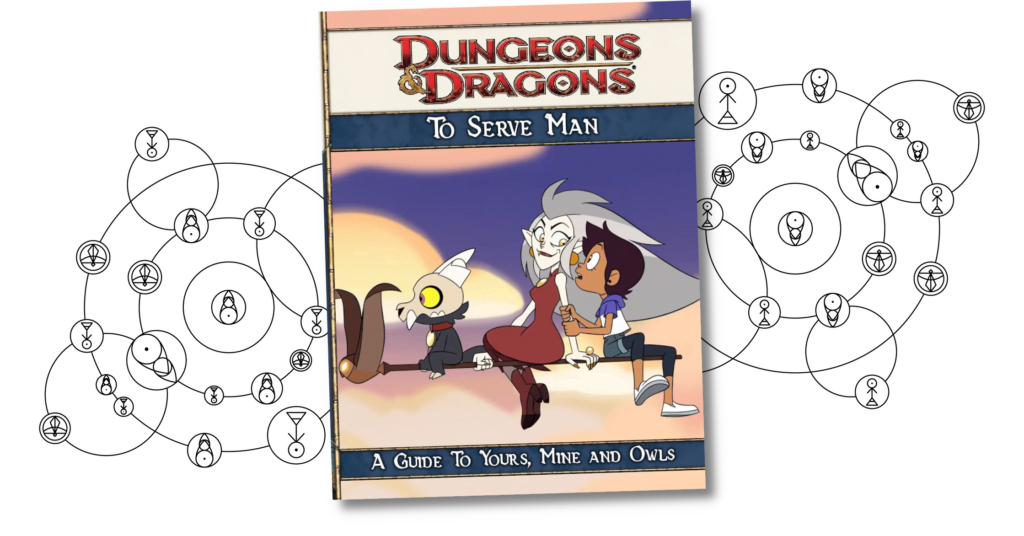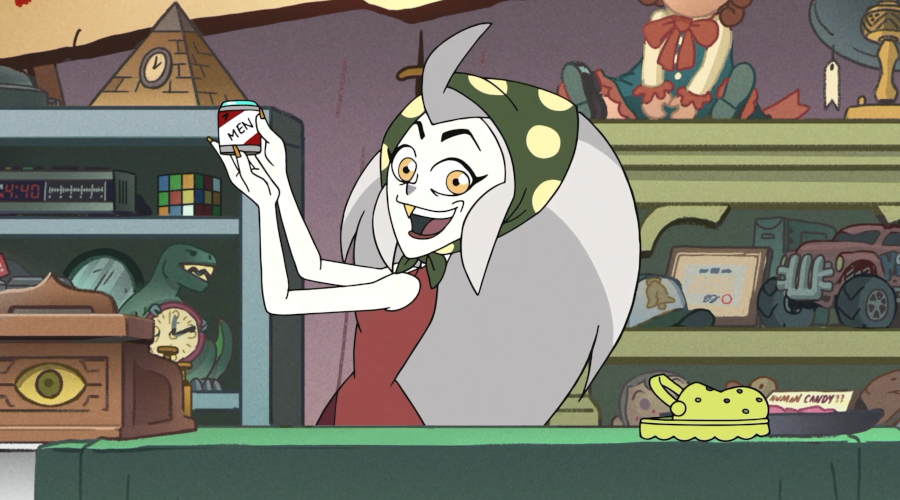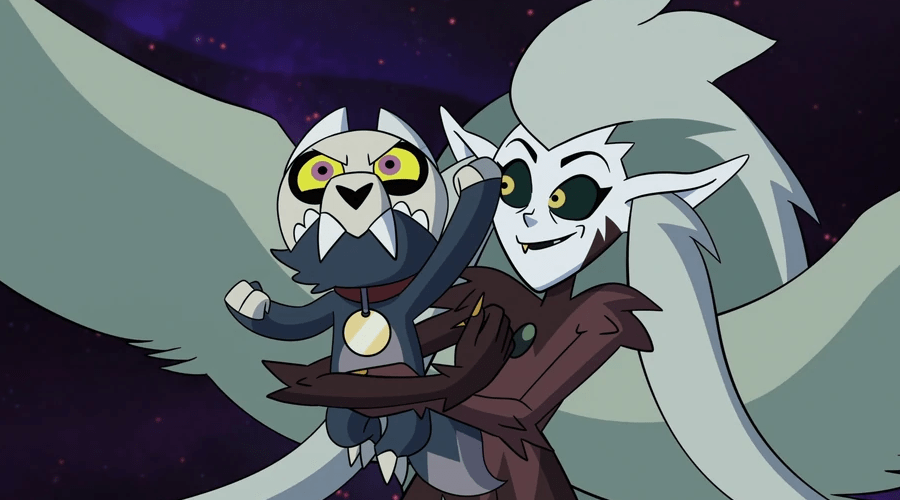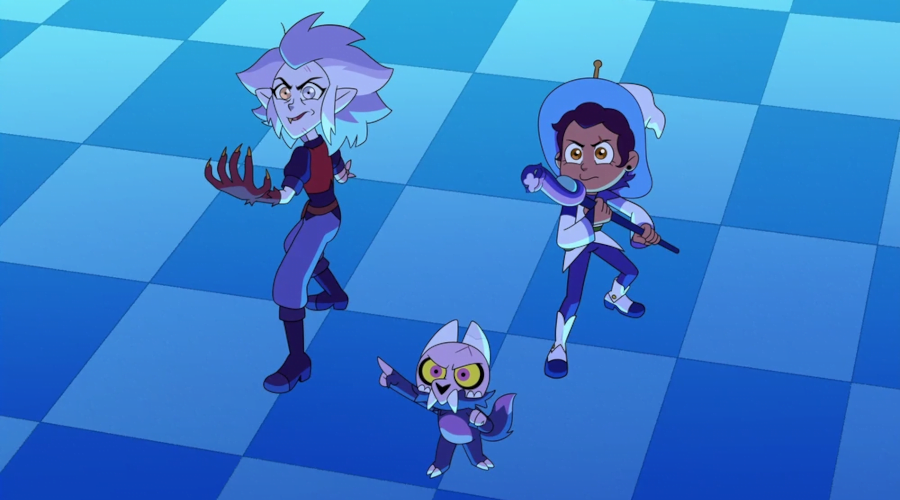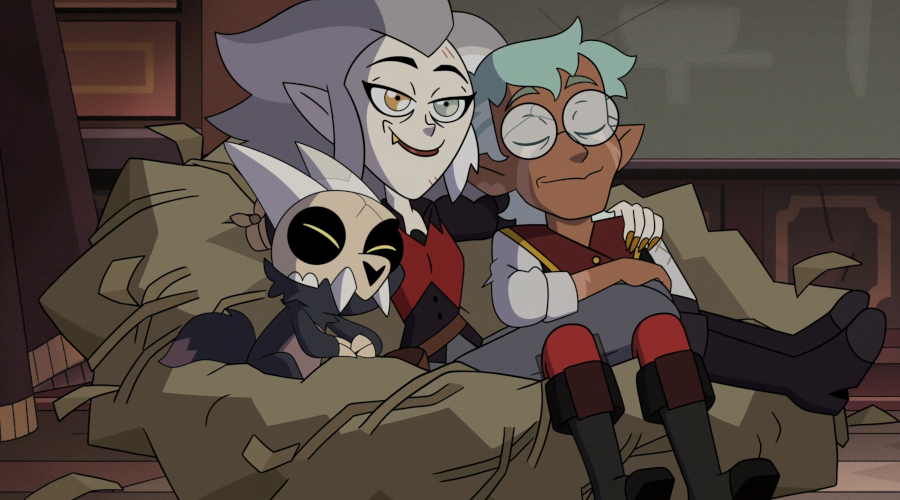In How To Be we’re going to look at a variety of characters from Not D&D and conceptualise how you might go about making a version of that character in the form of D&D that matters on this blog, D&D 4th Edition. Our guidelines are as follows:
- This is going to be a brief rundown of ways to make a character that ‘feels’ like the source character
- This isn’t meant to be comprehensive or authoritative but as a creative exercise
- While not every character can work immediately out of the box, the aim is to make sure they have a character ‘feel’ as soon as possible
- The character has to have the ‘feeling’ of the character by at least midway through Heroic
When building characters in 4th Edition it’s worth remembering that there are a lot of different ways to do the same basic thing. This isn’t going to be comprehensive, or even particularly fleshed out, and instead give you some places to start when you want to make something.
Another thing to remember is that 4e characters tend to be more about collected interactions of groups of things – it’s not that you get a build with specific rules about what you have to take, and when, and why, like you’re lockpicking your way through a design in the hopes of getting an overlap eventually. Character building is about packages, not programs, and we’ll talk about some packages and reference them going forwards.
We’ve talked about The Owl House before in this column, and last time it was about the incredibly cool Made Of Love Interest Amity Blight. But that’s not all that The Owl House offers for cool and interesting character inspiration you should totally use as an excuse to get onto the table in your friendly 4th Edition D&D game –
You do have one of those right?
Why are you reading these then?
Spoiler Warning: I’m going to mention things that happen in The Owl House that change the status quo. If you want to avoid that kinda thing, this is your warning!
Into The Owl House
Eda is challenging to pin down because it’s not like she exists in a world where we get a lot of very clear demonstrations of her physical ability to any scale we’d like. Eda complains about being old (in her forties according to the wiki, and like, sure honey), but we don’t see any sign that she struggles to carry modest weights. Her stamina is tied to whatever is funny in most scenes, and she’s deft enough to draw and write fluently with her off-hand.
Personality-wise, I think it’s pretty reasonable to describe Eda as someone clever and varying types of charming. We think she’s great (don’t we?) because she’s cool and funny and capable of deep sweetness, but also she yells at customers and people hate her. On the other other hand she lies a lot and people believe her, all of which suggests that you’re dealing with someone who can have a good or poor charisma, depending on how you want to express it.
(Almost like Gygaxian personality stats are at best a sort of puppet show behind characterisation but the point is what they let you do not how they perfectly map to fiction.)
Except at the same time, when you look at what Eda can do, the answer is ‘witchy stuff.’ As in ‘lots of witchy stuff.’ As in ‘almost anything you can do with magical effects, witchy stuff.’ In a setting with a strictly defineable set of magical schools, Eda skids all around through them and can do almost anything in that space. Note that this is a thing you can represent in-game too! Some characters build to use a lot of the same kinds of magic to maximise a damage type – like when I wrote about being Chandra Nalaar, that’s obviously a character who wants to use fire magic and fire implements. For Eda? She does water and lightning and fire and ice and pretty much everything, which means a build that focuses on a single elemental type isn’t going to capture that Eda feel.
Consider The Scale
What we’re going to need to consider here is the means of managed expectations. As with when I wrote about Harrowhark Nonagesimus, there’s an important difference between how a character works in a story and how that character works in a collaborative play experience. Eda in her story is one of a small number of characters with world-shaping power, while a character in an adventuring party is one of a small group of people grappling with challenges that are always going to have room to scale up around you. The size of the world around Eda is quite small – there’s the Boiling Isles and its mythos. The size of the world around a D&D adventurer is definitionally vast; the game is always capable of setting out more chairs with higher defenses and more hit points.
When you bring a picture of Eda to this kind of story experience, within the context of a controlled game like D&D then, you’re not saying ‘I should be able to fly at level 1 and have access to all these special rules.’ You’re still looking to play a version of the character who fits into the space of the other kinds of characters.
With that in mind, instead of trying to give you a build that can be all of Eda in all of the ways, building on a single central frame that kind of tags all the ways you can be Eda if you want to be. I want to talk about the three distinct eras of Eda (Edras).
Still, there is a unifying detail for Eda: She can do lots of different kinds of magic. To that end, time to grab the spellcasting grab bag player option that is the Ritual Caster feat. Some classes get that for free, and you might be unsurprised to see that’s where my suggestions for an Eda wind up.
Glossary Note: Conventionally, the term used in D&D for this mechanical package is race. This is the typical term, and in most conversations about this game system, the term you’re going to wind up using is race. For backwards compatibility and searchability, I am including this passage here. The term I use for this player option is heritage.
The First Impression
Take Eda.
(Please!)
But okay, take Eda at the start of the series. She sells things from a stall, in a shifty way, she casts spells very freely, and there’s a way of treating magic as something immediately to hand, easily. Eda is a spellcaster, a mage, and she avoids direct confrontation.
Now there is actually a class for witches already. It’s called the witch. And by the witch I mean the wizard. Because the witch class is a wizard variant. It does suffer from a problem common to wizard variants in that it’s worse than just playing a wizard, and that’s kinda a good problem to have because wizards are really, really good.
As a wizard, Ritual Caster, for free. Ding. As a wizard, you’re going to want to maximise your intelligence, and you can build for Constitution and take the Staff Implement mastery to make her tougher, without necessarily trying to build her for ‘strong’ or ‘armoured’ builds. Heritage wise, Deva gives an intelligence bonus and some nice abilities, and an ‘obviously not a normal person’ vibes. Put some stalks on your staff so it looks like a broom and bam! You’re witchy and wonderful, starting at level 1!
The Harpy
But okay, what if the part of Eda you like is the way she looks when she’s a cool harpy monster? It’s not a permanent state – it’s not even a lasting state – but I think it’s a really cool look for a character. Being able to shapeshift into a flying, monstrous form with killer claws and all – well, that stuff doesn’t tend to synergise very well with the spellcaster kinds of builds, but it is something interesting and cool.
See, one of the things I love about Ritual Caster is that any character who does anything can spend their time travelling the world, with that feat, as a ‘spellcaster’ – they collect magical rituals, they can stop and cast magical spells. To almost all character interactions, they are a wizard.
Then the fighting starts and they might do something completely different.
What I want to do for Harpy Eda is to play with that. A character from a defender class, ideally one that can fight without a weapon so the character can just erupt into a monster form. And of course, a Harpy flies so this complicates things a little.
If you want to fly at level one, there’s the Bozak Draconian. If you want to fight with your claws at level 1, as a defender, then you’re going to look at the Knight, and the Werebear. If you want the wizardy things at level 1, you’re going to take the Ritual Caster Feat. This is a package of abilities that sit together pretty nicely, and gets the character to work as quickly as possible. It’s not what I personally think of as ideal: I’d rather take a slower path and be willing to step up to these abilities.
For example, the knight/werebear combo is a little sketchy – sure, you get a reliable marking melee attack, that’s cool! But if you use Hand Axes, or the Monk multiclass feat, you can use your own hands, instead of relying on the shapeshift and the limited theme. If you take the Warden, you can get a bestial shapeshift with more utility and more interesting options. If you don’t mind waiting to fly, and instead have large wings that are only activated once you have an appropriate magic item, then you’re not locked into an option that’s at its strongest and most interesting at level 1.
The Glyph Mage
Finally, hey, remember when Yda loses her magic and has to learn how to do it all over again? And then she loses her arm so if she’s doing magic it’s with the other hand and like, that’s pretty amazing and cool. But in the case of a mage who’s making things, drawing on things, and specifically enacting magical rituals, you’re looking at a character whose magic is defined not by inborn power expressed wholly, but instead, their relationship to making stuff.
Hi there Artificer, what were you doing lurking most obviously and availably.
Look, the Artificer has a small problem. The problem is that they have the best possible power they’re ever going to get at level one. The power Magic Weapon is one of the best powers of its type, and all it requires you do to make it good is stand next to an ally. Stand next to two allies, and it gets even better. Make a character with a pet like the Fey Beast Tamer, and you can position that too and maximise their attacking, possibly by standing next to you and going WEH at things.
The Junk Drawer
Now you might have noticed, astute one, that in this treatment we’ve covered a controller (Eda the Witch), a defender (Eda the Harpy), and a leader (Eda the Glyph Mage). I mean, there’s the sorcerer as an option there, because it’s hard to get more ‘spellcaster who blasts at things,’ but I don’t find that a very satisfying thing for Eda, given its reliance on pure Charisma. But hey, you may think the most defining thing about Eda isn’t being smart, it’s raw, inborn talent.
Look, the Owl House is a great series. The main thing I appreciate it for though is teaching a new generation that Wendie Malick is really hot, and has pretty much always been, even though one of her defining roles in the 1990s was about how she Was Not, In Fact, Hot.
Which was silly.
